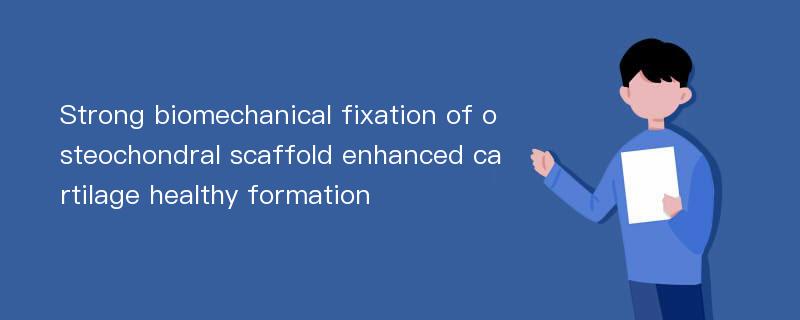
论文摘要
The treatment of osteochondral lesions has become a major concern in Orthopaedics because predominantly these defects do not heal spontaneously which make the joints susceptible to "early onset" secondary osteoarthritis [1]. Tissue engineering approaches have emerged for the repair of cartilage defects and damages to the subchondral bones and have shown potential in restoring joint‘s function. However, tissue engineering scaffolds often fail to satisfactorily regenerate the bone and the native hyaline cartilage and result in the formation of inferior(in terms of mechanical properties) fibrocartilage [2], affecting the durability of the regenerated tissue. We have developed a functionally graded multi-layered scaffold to address large osteochondral defects, with focus on improving bone ingrowth and cartilage quality. This study investigated the efficacy of this scaffold in vivo following implantation in sheep knee. The scaffold was fabricated using a combination of additive manufacturing and freeze-drying/critical drying techniques. Three layers of Ti matrix, PLA and collagen-PLGA were created to mimic subchondral bone, calcified cartilage and cartilage in native tissue, respectively. Multi-layered collagen/hydroxyapatite scaffolds were used as control. Ten sheep were operated on and either the scaffold(n=6) or the control(n=4) was implanted in the left medial condyle. The tissue was retrieved 12 weeks post-operation. Bone ingrowth into the titanium matrix and quality of the cartilage was assessed macroscopically, histologically and with the use of uCT. It was observed that gross morphological appearance of regenerated cartilage was superior in osteochondral scaffold group compared to the control group. Collagen 2 and Safranin-O stainings confirmed formation of a hyaline-like cartilage. The pQCT examination revealed that the BV/TV ratio in the surrounding subchondral bone was significantly higher(p=0.01) in the osteochondral scaffold group(~40%) than that in the control group(~15%). The bone-scaffold contact analysis revealed the bone-implant contact achieved 61%. It is believed that the new bone growth into the Ti matrix at bone section provided a stable mechanical fixation providing a strong support to the overlying cartilage layer leading to an improved cartilage formation.
论文目录
文章来源
类型: 国际会议
作者: Maryam Tamaddon,Chaozong Liu
来源: 第六届国际仿生工程学术大会暨2019年自然启迪科技国际研讨会 2019-09-23
年度: 2019
分类: 基础科学,医药卫生科技
专业: 生物学,生物医学工程
单位: Institute of Orthopaedic Musculoskeletal Science, University College London, Royal National Orthopaedic Hospital
分类号: R318
DOI: 10.26914/c.cnkihy.2019.063670
页码: 50
总页数: 1
文件大小: 260k
